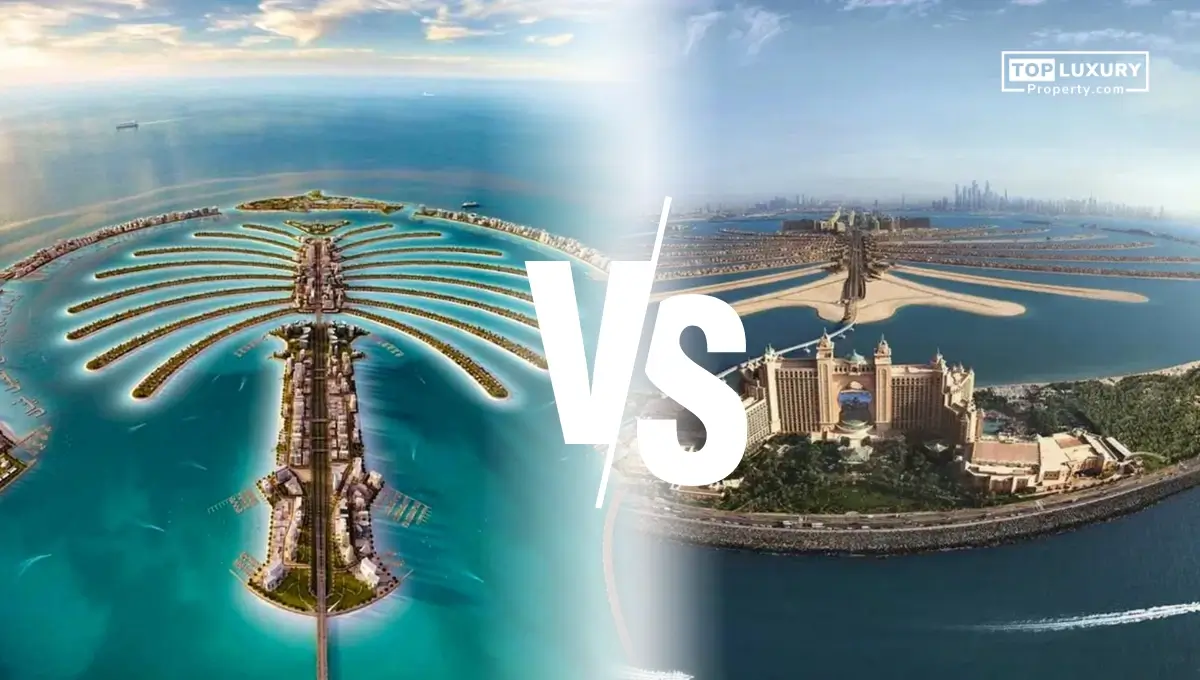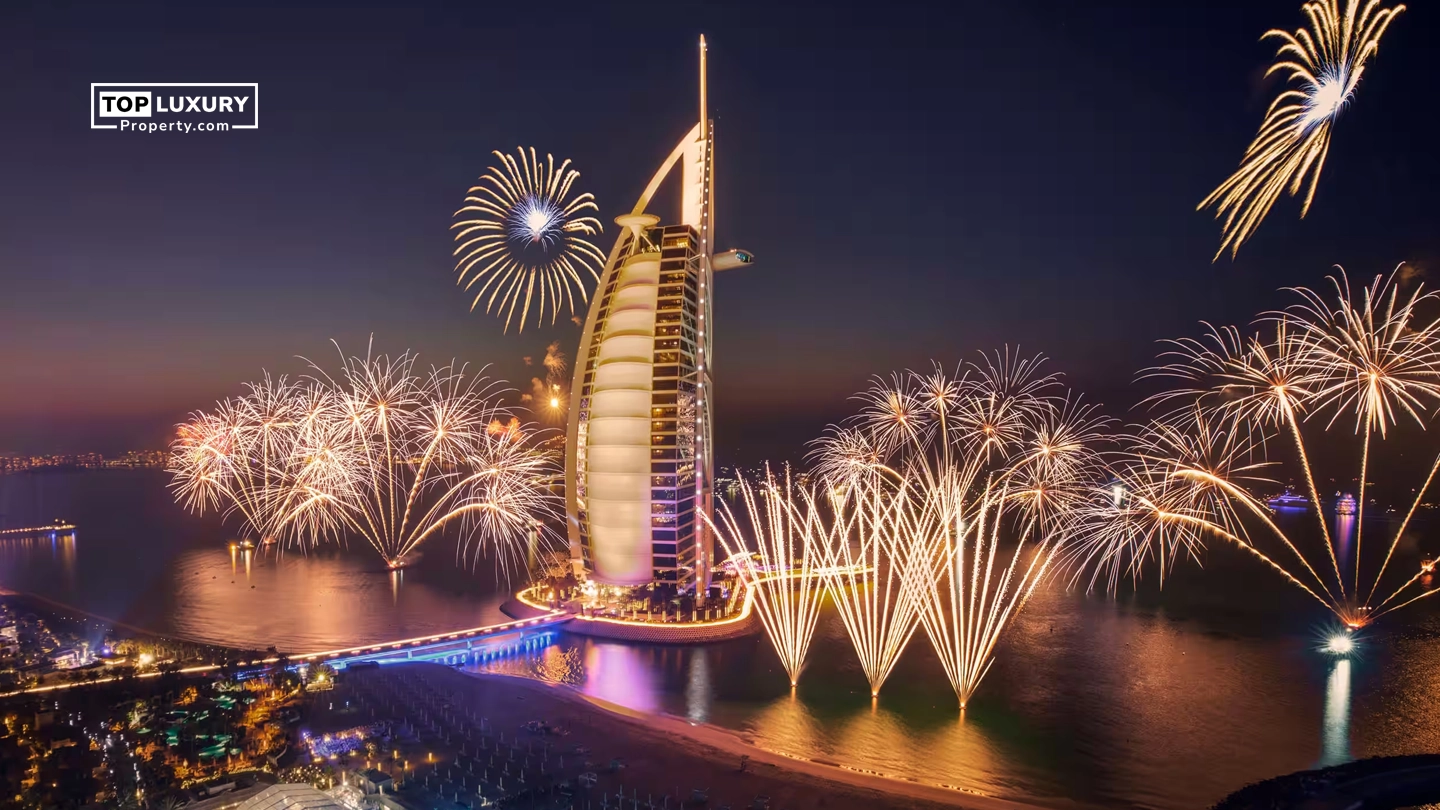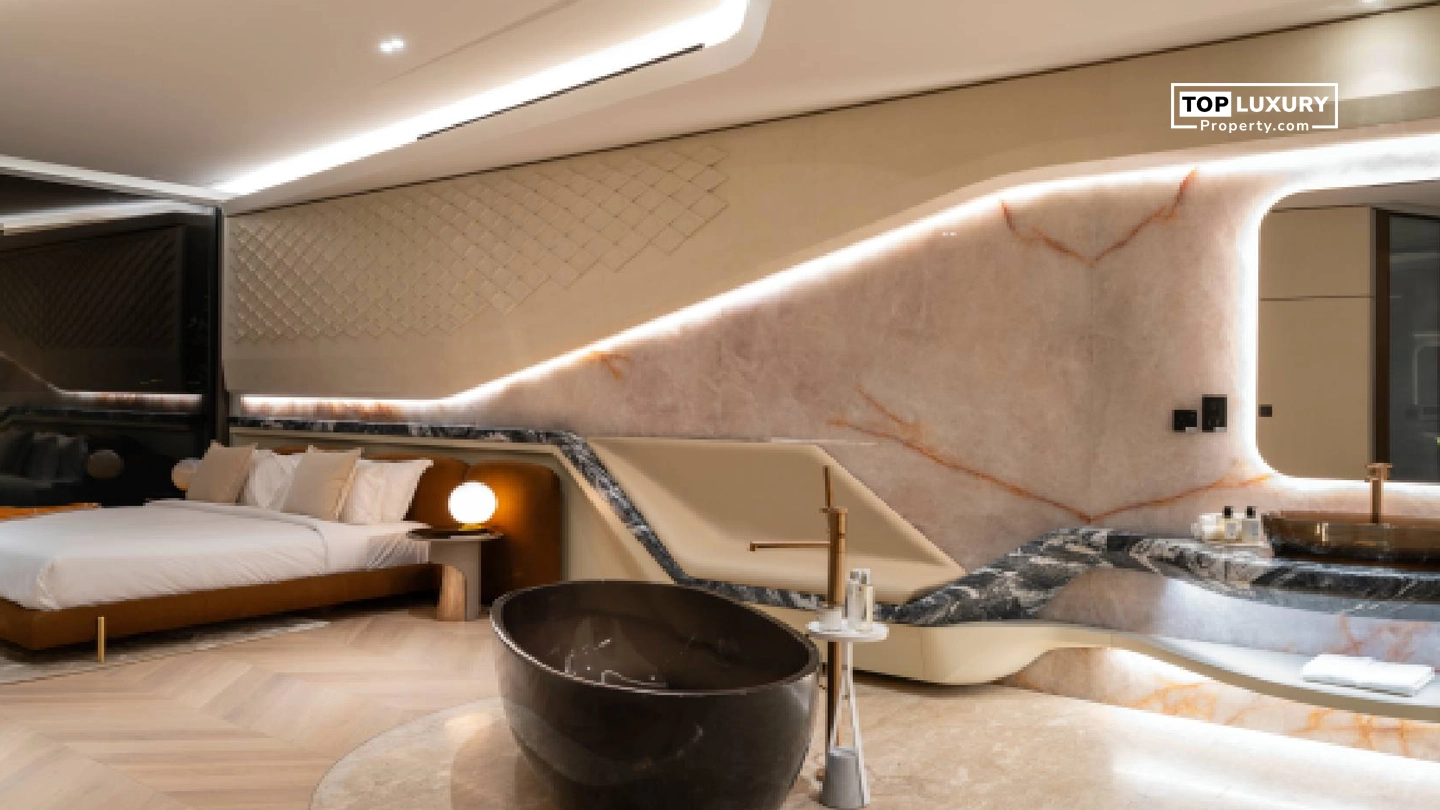Introduction
Dubai is famous for its luxury projects and ambitious developments. Its man-made islands are perfect examples of this grand vision. Both Palm Jebel Ali and Palm Jumeirah were created by Nakheel Properties. Palm Jumeirah has been Dubai’s real estate crown jewel for years. The 2023 relaunch of Palm Jebel Ali shows a new vision for luxury living.
Are you looking for an established community with immediate returns? Or do you prefer a developing area with higher long-term growth? Is access to Dubai’s center important for your daily routine? Or are you more focused on space and modern features?
Let’s compare Palm Jebel Ali and Palm Jumeirah to find answers.
History
Palm Jumeirah was Dubai’s first island project, launched in 2001. It was built in phases following Sheikh Mohammed’s vision. The island quickly became one of the world’s most iconic structures. It has grown into a popular area with luxury hotels and homes.
Key milestones for Palm Jumeirah:
- 2001: Construction begins
- 2006: First residential handovers
- 2009: Opening of Atlantis The Palm, boosting tourism
- 2019-Present: Ongoing development with Nakheel Mall and The Pointe
Palm Jebel Ali was launched in 2002 but stopped in 2008. This happened during the global financial crisis. The project was finally revealed again in May 2023. It’s part of the Dubai Urban Master Plan 2040 for the UAE. The island will be Dubai’s next premium waterfront destination. It offers large beachfront villas and smart city features.
Palm Jebel Ali’s 2023 revamp includes:
- Infrastructure contracts worth over AED 5 billion for luxury villas
- AED 810 million invested in marine works
- Partnership with DEWA worth AED 270 million for power stations
- First phase completion by late 2026
Location and Accessibility
Each island’s location affects daily life, property values, and living convenience.
Palm Jumeirah sits between Dubai Marina and Downtown Dubai. The island can be reached by:
- Sheikh Zayed Road (E11) in 16-21 minutes
- Palm Monorail connecting to Dubai Metro
- 30 minutes from Dubai International Airport (DXB)
- Close to Dubai Marina and JBR
- RTA water taxis for scenic travel
Manuj Garg says, “It has fast access to malls, schools and business centers.” Downtown Dubai is just 30 minutes away. This makes it ideal for people working in central Dubai.
Palm Jebel Ali is located to the west of the city near:
- Jebel Ali Port
- Dubai South district
- Al Maktoum International Airport (DWC)
The island can be reached via Sheikh Zayed Road. Future Dubai Metro extensions will also connect it. It’s perfect for long-term investors and those wanting proximity to business hubs. Though more remote, it offers:
- More peace and exclusivity
- Strategic location near Dubai Economic Corridor
- Closer to Abu Dhabi for daily commuters
Design and Infrastructure
Both islands follow the palm tree design but differ in scale and features.
Palm Jumeirah covers about 560 hectares (5.6 km²). It extends 5 kilometers into the Arabian Gulf. The island has:
- The central Trunk
- 16 Fronds extending outward
- The Crescent that serves as a breakwater
The island is fully developed with established facilities including:
- The Palm Monorail - the first in the Middle East
- Direct access to Sheikh Zayed Road
- Nakheel Mall and other shopping centers
- Al Ittihad Park - the first native botanical park
- The Palm Tower with its observation deck
- The 11-kilometer Palm Boardwalk around the trunk
- West Beach along the trunk’s western shoreline
- Club Vista Mare’s beachfront dining area
Palm Jebel Ali is over twice the size of Palm Jumeirah. It covers 13.4 km² with a 91-kilometer coastline. The master plan includes:
- 16 Fronds of exclusive waterfront villas
- 7 interconnected islands across 10,500,000 sq. ft.
- It will extend Dubai’s shoreline by 110 kilometres
- Signature Yacht Club
- Lifestyle Mall
- Family Beach Club
- Iconic Tower with panoramic views
- Sunset and Sunrise Waterfront Promenades
- Sports and Wellness Club
- Eco Resort
- Celebration Village
- Gateway Towers
Feature Comparison:
| Feature | Palm Jumeirah | Palm Jebel Ali |
|---|---|---|
| Total Area | 560 hectares (5.6 km²) | 1,340 hectares (13.4 km²) |
| Coastline | Approximately 78 kilometers | 91 kilometers (Dubai’s longest) |
| Population Capacity | Over 25,000 residents | Over 35,000 families |
| Extension into Gulf | 5 kilometers | Significantly larger |
| Layout | Trunk, 16 Fronds, Crescent | 16 Fronds, 7 Islands, Crescent |
| Road Network | Single entry road, sometimes congested | Wider roads, better planned traffic flow |
| Hotels & Resorts | 30+ | 80+ planned |
| Green Space Allocation | Limited | 30% of total area |
| Development Status | Fully developed | Under construction |
The infrastructure differences reflect their different development periods. Palm Jumeirah shows early 2000s design thinking. Palm Jebel Ali benefits from two decades of urban planning evolution. This results in a more spacious and forward-thinking layout.
Lifestyle and Amenities
The lifestyle experience differs significantly between these two prestigious addresses.
The Palm Jumeirah Lifestyle
Palm Jumeirah has become a vibrant, cosmopolitan community:
Leisure and Entertainment
- Beach Clubs: FIVE Palm Jumeirah, Riva Beach, White Beach, Nikki Beach
- Luxury Hotels: Over 30 premium hotels including Atlantis The Palm
- Entertainment Venues: Atlantis Aquaventure, The Lost Chambers Aquarium, The View
- Marine Activities: Yacht charters, jet-skiing, parasailing, flyboarding and diving
Dining and Nightlife
- Celebrity Chef Restaurants: Nobu, Gordon Ramsay’s Bread Street Kitchen, Hakkasan
- Beachfront Dining: 101 Dining Lounge, FIVE’s Beach by FIVE
- Nightlife Venues: WHITE Dubai, SoBe, Buddha Bar and Sushisamba
- Casual Eateries: Jones the Grocer, The Tap House and Barrel 12
Community Atmosphere
- Resident Demographics: Over 80 nationalities from Europe, Russia, India and GCC
- Social Scene: Active with regular community events and beach gatherings
- Pace of Life: Energetic during tourist season with a balance of exclusivity
- Community Feel: Strong sense of community despite being a high-profile area
The Palm Jebel Ali Vision
Palm Jebel Ali will be a more spacious, eco-friendly community:
Planned Lifestyle Features
- Open Spaces: 30% of the island will be parks and green areas
- Beachfront Parks: Each frond will have a park and community spaces
- Wellness Focused: Sports clubs, walking trails and cycling paths for active living
- Family Oriented: Larger plots and facilities designed for family living
Proposed Amenities
- Retail and Dining: Lifestyle Mall and waterfront dining destinations
- Entertainment: Family waterpark, beach clubs and leisure parks
- Marinas: Two marinas for the yachting community with boutique hotels
- Cultural Venues: Celebration Village and spaces for community events
Expected Community Character
Based on the master plan, Palm Jebel Ali will be:
- Relaxed: More laid back compared to Palm Jumeirah’s busy atmosphere
- Exclusive: Lower density development for more privacy and exclusivity
- Sustainable: Eco-friendly infrastructure for environmentally conscious living
Palm Jumeirah offers immediate access to Dubai’s sophisticated lifestyle options. Palm Jebel Ali focuses on sustainable living and family-friendly environments. Your choice depends on valuing established vibrancy or future-focused tranquility.
Investment Potential and Property Options
Both islands have great investment cases but with different timeframes and returns.
Palm Jumeirah
As an established luxury destination Palm Jumeirah offers:
- Stable capital growth (historically 5-7% per annum)
- Strong rental yields 5-6%
- High demand from international investors
- Limited supply of new properties
- Premium for waterfront properties
- Variety of property types from studios to mansions
Property prices on Palm Jumeirah vary:
- Studio apartments: AED 1.3 million+
- 1-bedroom apartments: AED 2-4 million
- 2-bedroom apartments: AED 3.6-5.7 million
- 3-bedroom apartments: AED 5.8-10.9 million
- 4-bedroom villas: AED 30.8 million+
- 5-bedroom villas: AED 47.4 million+
- Signature villas: Up to AED 170 million
ROI for apartments is 6.5% to 22.3%. Studios offer the highest returns. Villas provide 3.7-4% per annum.
Palm Jebel Ali: Growth Potential
As a new project, Palm Jebel Ali has different investment characteristics:
- Lower entry prices compared to Palm Jumeirah
- Higher potential for capital growth (35-45% between 2023-2028)
- Expected rental yields 7.5-10% upon completion
- Larger plot sizes and beachfront access
- Focus on villa developments first
- Opportunity for early-stage investment
Current offerings include:
- The Beach Collection villas (Villa Blue Horizon, Villa Provence, etc.)
- The Coral Collection villas (Villa Hibiscus, Villa Coral Living, etc.)
- Prices from AED 17.7 million to AED 119 million
The higher entry price is balanced by larger property sizes. Long-term growth potential is also higher.
Community and Future Development
The community and development trajectory differs between these two iconic islands.
Palm Jumeirah has grown into a cosmopolitan neighborhood with 25,000 residents. The community is largely settled, with development focusing on:
- Premium off-plan projects like Six Senses Residences and Armani Beach
- Luxury hotel additions including NH Hotel with beach access
- Enhancement of existing amenities rather than major expansion
- Limited new land development as the island has reached capacity
- Focus on ultra-luxury segments and branded residences
Notable off-plan projects include Palm Beach Towers and Serenia Living. Completion dates range from 2024 to 2027.
Palm Jebel Ali is being developed with a forward-thinking vision of:
- Sustainable community design with pedestrian-friendly neighborhoods
- Smart city technologies throughout public and private spaces
- Diverse residential options for various family sizes and budgets
- Enhanced coastal protection systems for climate resilience
- Comprehensive masterplan for cohesive community development
- Capacity for over 35,000 families upon full completion
The project aligns with the Dubai 2040 Urban Master Plan. It sets a new standard for integrated coastal districts. About 30% of public buildings will run on renewable energy. Palm Jebel Ali shows Dubai’s commitment to sustainable development.
Which Island is Better for You?
The “better” choice between these islands depends on your priorities and goals. Both offer excellent opportunities in Dubai’s luxury real estate market.
Choose Palm Jumeirah if you want:
- Immediate luxury living in an iconic, established community
- Proximity to Dubai Marina, Downtown and business districts
- Various property types across different price points
- Vibrant lifestyle with plenty of dining and entertainment options
- Ready-to-use amenities and infrastructure
- Established rental income and proven investment performance
- A globally recognized address
Choose Palm Jebel Ali if you prefer:
- New-generation waterfront development with modern design
- Smart villas with future-ready infrastructure and sustainable features
- Larger plots and private beach access at better value
- High long-term capital growth (35-45% by 2028)
- More family-friendly community environment
- Being a first-mover in Dubai’s next big development
- Higher ROI (7.5-10%) compared to established areas
Both islands represent luxury property in Dubai, each with unique advantages. Palm Jumeirah offers prestige and convenience of an established destination. Palm Jebel Ali provides space, modernity and potential future returns.
Your choice depends on your personal timeline and lifestyle preferences. Do you want immediate luxury and existing amenities? Or are you willing to wait for potentially higher returns? Whether you choose the proven icon or the promising future, both Palm islands offer ultimate Dubai waterfront living.






_(2)_638647637563832478_820465_.webp)